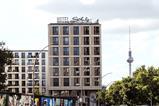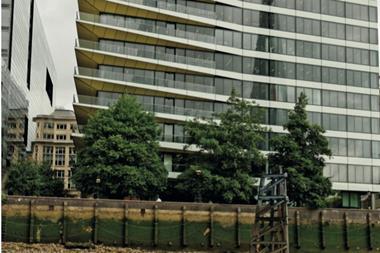The latest Bayes UK Commercial Real Estate Mid–year 2022 report shows that £23.7bn (€27.2bn) of new lending was issued in the first half of 2022, indicating strong appetite for new business before deal flow started to slow after June.
But with the UK entering a dramatically different interest-rate environment, mainstream lenders such as banks and building societies are expected to pass on funding opportunities to alternative lenders that can provide mezzanine finance.
The bi-annual report, authored by Nicole Lux, senior research fellow at Bayes Business School (formerly Cass), shows that the alternative lender segment has now experienced 12 years of continuous growth, growing on average 15% per year.
Lux said: “Interest payments and property income were approaching a 1:1 ratio by June 2022, and with the five-year Sonia swap reaching 5.2% by the end of September 2022, property income will not be sufficient to refinance some properties at these rates, leaving a potential funding gap.
“Our analysis shows that property net income yields need to increase to over 6% across different property types, or property values need to adjust downwards by between 25% and 35% to reach a new market balance.”
With the announcement of interest rate increases in January 2022 followed by the start of the energy crisis in the wake of Russia’s invasion of Ukraine, UK public bond issuance dropped to a low of £4bn in the first half of 2022, according to the Bayes Bond Monitor.
The high incremental cost of debt is forcing developers and property companies to change from a debt-funded acquisition model to a capital-light owner/investor model. Some developers are considering funding new construction with 100% equity.
Paul Coates, head of debt and structured finance, CBRE Capital Advisors, said: “The Bayes report continues to demonstrate the diversity and depth of liquidity in the UK lending market, which should give cause for confidence in the future. At the date of the report, some of the macroeconomic and geopolitical challenges were evident and have accelerated in the past few weeks, which the lending market and wider real estate market is evaluating.
“In the short term, we are seeing some flight to quality, whether that be sponsor strength and/or asset quality, some moderation in leverage to maintain debt service ratios, and some margin increases reflecting the broader environment.”
Coates added that in a higher interest rate environment credit strategies provide a strong risk adjusted return investment for many institutions.
He said: “We know of increased allocations happening, so I expect we will continue to see lender liquidity available across the market, from all lender types, with variation at the micro level as individual institutions setting their own strategy relating to their back book and risk/return appetite.”
Given this backdrop, Coates expects to see competitive bidding for the strongest transactions, and the continuing trend of lender focus on sustainability, across ESG metrics.
The Bayes report found that British banks have been dominating their own market, providing 35% of new financing, followed by debt funds which held a share of 24%. Alternative lenders, including debt funds and insurance companies, were responsible for 38% of new loan origination.
Conversely, international banks have seen their market share gradually eroded from 34% to 28% over the past 10 years. Overall, according to Bayes, the largest 12 originators were responsible for 58% of new loans, of which five were UK banks.
However, a large pricing gap remains between the largest and smallest balance sheet lenders, resulting in a price differential of 0.8% for prime offices. For example, prime office loan margins for the largest lenders stand at an average of 1.98% while borrowers can expect to pay an average loan margin of 2.77% when borrowing from smaller lenders.
When asked generally about lending appetite for 2022, prime office and prime industrial are the two property sectors that most lenders are willing to finance (93% and 85%, respectively), followed by prime residential investments (81%).
Development lending made up 22% of new origination in 2022, showing a new increase in commercial development finance, which for the first time since the pandemic includes speculative development finance.
Key highlights from the report, which covers data up to June 2022, also include:
- Debt funds have taken on larger scale asset transitioning projects, supplying 72% of commercial development finance;
- Margins for prime office loans compressed by 5bps across six months, showing the high market competition during the first half of 2022, but, for other property types, margins for 60% loan-to-value (LTV) ratios increased by 5-10bps;
- Generally, smaller lenders have been less likely to refinance existing borrowers and hence, have the lowest client retention rate, generating most of their business from new acquisition lending;
- Underperforming and defaulted loans remained stable, with an average default rate of 3%.
Peter Cosmetatos, chief executive of real estate lending association CREFC Europe, said: “Economic and political conditions have changed very rapidly since the end of the period covered by this research, but it is valuable to have this detailed picture of the state of the market at what may prove the end of one era and the beginning of another. It depicts a stable, diversely funded market, with debt funds and insurers together accounting for 38% of new origination and surpassing UK banks and building societies for the first time.
“It remains to be seen whether the market will be as resilient to the consequences of geopolitical turmoil and higher interest rates as they were to Brexit and COVID, and who is best placed to finance the repurposing and decarbonisation that so much of the nation’s real estate needs.”
Neil Odom-Haslett, president of the Association of Property Lenders, added: “At the beginning of the year, there were already a number of signs that the real estate market was getting a bit over-heated and the Russian invasion of Ukraine certainly accelerated this with rising inflation and increasing interest rates, to name just two of the headwinds.
“In Q1, there was a crossover when the all-in cost of debt exceeded property net initial yield in many asset classes, which usually suggests this cannot be maintained indefinitely (unless there is strong rental growth), and that there is likely to be a valuation correction at some point in the future.
“The report suggests that a number of lenders continued to lend despite this and just as we were reaching the peak of the market (consensus view is that the valuation peak was in June). However, the report does indicate they did maintain their underwriting discipline (in the main) with max LTVs for senior debt at 60% (therefore unlikely to see the distress of previous cycles).
“I’m slightly surprised, however, that there was not more stress and distress in development lending with cost inflation and supply-chain issues – perhaps this will follow in H2 2022 and into 2023.”
To read the latest edition of the latest IPE Real Assets magazine click here.

















